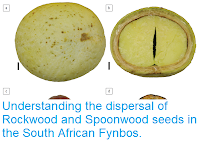Begonia, Begonia spp., are perennial flowering plants related to Gourds, found in tropical and subtropical forests around the world, and popular as houseplants. They are typically ground-dwelling understory Plants, though some species are epiphytes (live on other Plants, usually in the canopy of trees). Begonias are monoecious, with both male and female flowers occurring on a single plant, and may be upright-stemmed, rhizomatous or tuberous.
In a paper published in the journal PhytoKeys on 2 July 2018, Jian-Wu Li of the Center for Integrative Conservation at the Xishuangbanna Tropical Botanical Garden, Yun-Hong Tan, also of the Center for Integrative Conservation at the Xishuangbanna Tropical Botanical Garden, and of the South Asia Biodiversity Research Institute of thr Chinese Academy of Sciences, Xi-Long Wang of the Tibet Plateau Institute of Biology, Cheng-Wang Wang of the School of Life Sciences at Nanchang University, and Xiao-Hua Jin of the Institute of Botany of the Chinese Academy of Sciences, describe a new species of Begonia from Medog County in Tibet and the Putao District of Kachin State in Myanmar.
The new species is named Begonia medogensis, meaning 'from Medog', as it was first identified in a subtropical semi-evergreen forest in Medog County, Tibet, and later found in a tropical montane forest in the Putao District of Kachin State in Myanmar. It is an erect rhizomatous perennial herb reaching up to a metre in height, with hairy, oval-to-lance-shaped leaves growing directly from the stems. It produces bracts of flowers from October to December, each of which bears 1-5 pink and white flowers, all of the same sex.
Begonia medogensis. Jian-Wu Li in Li et al. (2018).
See also...
Follow Sciency Thoughts on Facebook.







